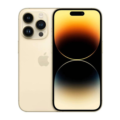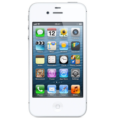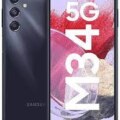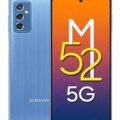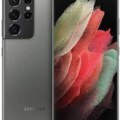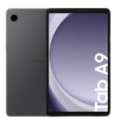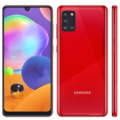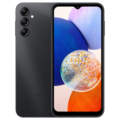- Home
- All Products
- Mobiles
- Apple iPhone 12 Pro Price & Specs
Apple iPhone 12 Pro Price & Specs
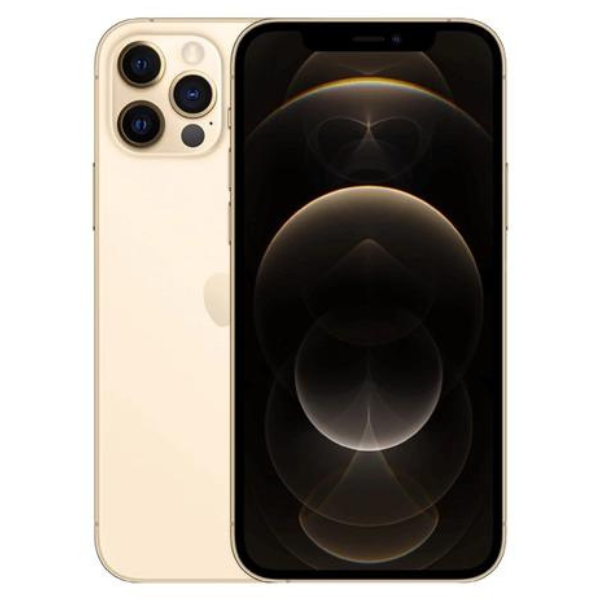

-
Processor: Apple A14 Bionic
-
RAM: 6 GB
-
Storage: 128 GB, 256 GB, 512 GB
-
Display: 6.7
-
Camera: 12MP
-
Battery: IOS 14.1
Specs
General
| Device Type | Smart Phone |
| Model | Apple iPhone 12 Pro |
| Announced | 23 October, 2020 |
| Released | 23 October, 2020 |
| Status | Available |
Network
| 2G Network |
SIM1: GSM 850 / 900 / 1800 / 1900 SIM2: GSM 850 / 900 / 1800 / 1900 |
| 3G Network |
HSDPA 850 / 900 / 1700(AWS) / 1900 / 2100 |
| 4G Network |
LTE band 1(2100), 2(1900), 3(1800), 4(1700/2100), 5(850), 7(2600), 8(900), 12(700), 13(700), 17(700), 18(800), 19(800), 20(800), 25(1900), 26(850), 28(700), 29(700), 30(2300), 34(2000), 38(2600), 39(1900), 40(2300), 41(2500), 66(1700/2100) |
| 5G Network |
5G SA/NSA/Sub6/mmWave |
| SIM <strong>SIM</strong> (Subscriber Identity Module) is a small card that contains mobile network subscriber's account information. This allows the phone using the card to attach to a mobile network. The SIM card is most commonly associated with GSM and UMTS mobile networks. Moving a SIM card from one phone to another allows a subscriber to switch mobile phones without having to contact their mobile network carrier. SIM cards can also be used by a phone to store limited amounts of data, such as phone numbers and text messages. | Nano SIM |
| Dual SIM | eSIM |
Design
| Type <strong>Design Type</strong> called form factor refers to a mobile phone's size, shape, and style as well as the layout and position of major components of phone. There are three major form factors seen in mobile phones => bar phones, folding phones and sliding phones. | Bar |
| Dimensions | 146.7 x 71.5 x 7.4 mm |
| Weight | 189 |
| Material | Glass front (Gorilla Glass), glass back (Gorilla Glass), stainless steel frame |
| Colors |
Silver, Graphite, Gold, Pacific Blue |
Display
| Display Type <strong>Display Technology => </strong> A number of display technologies and types used in mobile phones => TFT (Thin Film Transistor), IPS (In-Place Switching), OLED (Organic Light Emitting Diode), AMOLED (Active-Matrix Organic Light-Emitting Diode), Super AMOLED (an even advanced version of AMOLED), Resistive Touchscreen (Resistive touchscreens contain two layer of conductive material with a very small gap between them which acts as a resistance), Capacitive Touchsceen (Capacitive touchscreen technology consists of a layer of glass coated with a transparent conductor) | Super Retina XDR OLED Capacitive Touchscreen |
| Size | 6.1 Inches |
| Resolution | 1170 x 2532 Pixels |
| Display Colors <strong>Display Colors</strong> is refers to the number of different shades of colors that the screen is capable of displaying => 64K colors, 256K colors and 16 million colors, Obviously 16M is highest available range of colors and better than others. | 16M colors |
| Pixel Density <strong>Pixel Density (PPI)</strong> is refers to the concentration of pixels on a particular display, measured in pixels per inch (ppi). Pixel density is calculated by dividing the diagonal pixel resolution of a display by its diagonal size, higher pixel density better display quality. | 457 PPI |
| Display Protection <strong>Display Protection => </strong> Gorilla Glass is a special alkali-aluminosilicate glass shield with exceptional damage resistance that helps protect mobile displays from scratches, drops, and bumps of everyday use, It is always better to go for a smartphone with Gorilla Glass for that added protection and peace of mind. | Scratch-resistant glass, oleophobic coating |
| Features |
HDR10, 800 nits (typ), 1200 nits (peak), Dolby Vision, Wide color gamut, True-tone |
Software
| Operating System <strong>OS => </strong> Every computer system run on a base software called Operating System (OS). Operating System controls all basic operations of the computer (such as smartphone, PDAs, tablet computers and other handheld devices). The Operating System allows the user to install and run third party applications (apps), apps are used to add new functionality to the device. | IOS 14.1 |
| User Interface <strong>UI</strong> or user interface of a device is the look and feel of the on-screen menu system. How it works, its color scheme, how it responds to button presses, all of these things are part of the user interface. | iOS UI |
Hardware
| Chipset <strong>Chipset</strong> is a group of integrated circuits designed to perform one or a more dedicated functions, often with real time computing constraints, Popular smartphones are equipped with more advanced embedded chipsets that can do many different tasks depending on their programming. | Apple A14 Bionic (5 nm) |
| CPU <strong>CPU</strong> (Central Processing Unit) mostly known as processors, CPU processes instructions in order to carry out certain functions that make your device operate properly. Processors are often described as the brain of computers, smartphones and tablets, Smartphones and tablets rely on processors to carry out their every task, Processors are an incredibly important factor in selecting any type of computing device, including your smartphone. | Hexa-core (2 x 3.1 GHz Firestorm + 4 x 1.8 GHz Icestorm) |
| GPU <strong>GPU</strong> (Graphics Processing Unit) is a single-chip processor designed to rapidly manipulate and alter memory to accelerate the creation of images in a frame buffer intended for output to a display, This includes things such as lighting effects, object transformations, and 3D motion. | Apple GPU (4-core graphics) |
| RAM (Memory) <strong>RAM</strong> (Random Access Memory) is a type of computer memory that can be accessed randomly, any byte of memory can be accessed without touching the preceding bytes that allows information to be stored and accessed quickly from random locations. RAM is the most common type of memory found in computer systems, smartphones, tablets and other electronic devices. | 6 GB |
| Internal Storage <strong>Internal Storage</strong> is a data storage space (flash memory) mostly used in smartphones, tablets and other electronic devices where operating system, apps, music, photos, videos, files and other user data Is stored. | 128 GB, 256 GB, 512 GB |
| Card Slot <strong>Memory Card Slot</strong> is a special slot for inserting a memory card. Memory cards allow you to expand the phone's built-in memory, A memory card (sometimes called a flash memory card or a storage card) is a small storage medium used to store data such as text, pictures, audio, and video, for use on small, portable or remote computing devices such as mobile phones, mp3 players, digital cameras. | |
| Sensors <strong>Sensors</strong> are electronic components that detects and responds to some type of input from the physical environment. The specific input could be light, heat, motion, moisture, pressure and location, The output is generally a signal that is converted to use in computing systems, a location sensor, such as a GPS receiver is able to detect current location of your electronic device. |
Accelerometer, Compass, Face ID, Gyro, Proximity |
Camera
| Primary <strong>Camera</strong> is able to capture photographs and usually videos, The most important characteristics of a camera are the resolution (measured in megapixels), lens focus type (fixed or automatic), higher megapixel cameras are known to capture higher quality photos, but not always a good measurement of the photos quality. | Quad Camera: 12 MP, f/1.6, 26mm (wide), dual pixel PDAF, OIS + 12 MP, f/2.0, 52mm (telephoto), 1/3.4", PDAF, OIS, 2x optical zoom + 12 MP, f/2.4, 13mm (ultrawide), 1/3.6 + TOF 3D LiDAR scanner (depth, dual-LED dual-tone flash |
| Secondary | Dual 12 MP, f/2.2, 23mm (wide), 1/3.6" + SL 3D, (depth/biometrics sensor), HDR, Video (4K@24/30/60fps, 1080p@30/60/120fps, gyro-EIS) |
| Video | 4K@24/30/60fps, 1080p@30/60/120/240fps, 10‑bit HDR, Dolby Vision |
| Camera Features |
phase detection, OIS, 2x optical zoom, Geo-tagging, , touch focus, face/smile detection, HDR (photo/panorama), Video (4K@24/30/60fps, 1080p@30/60/120/240fps, 10‑bit HDR, Dolby Vision HDR (up to 60fps), stereo sound rec.) |
| Flash <strong>Flash Light => </strong> There is commonly two types of flash lights are used in camera mobile phones, LED Flash (LED flash offers lower power consumption with drive circuitry that takes up very little room, LEDs can be strobed faster than any other light source), Xenon Flash (xenon flash produces an extremely intense full-spectrum white light for a very short duration) |
Connectivity
| Wi-fi <strong>Wi-Fi</strong> is a popular wireless networking technology using radio waves to provide high-speed network connections that allows devices to communicate without cords or cables, Wi-Fi is increasingly becoming the preferred mode of internet connectivity all over the world. | Wi-Fi 802.11 a/b/g/n/ac/6, dual-band, hotspot |
| Bluetooth <strong>Bluetooth</strong> is a wireless communications technology for exchanging data between mobile phones, headsets, computers and other network devices over short distances without wires, Bluetooth technology was primarily designed to support simple wireless networking of personal consumer devices. | v5.0 with A2DP, LE |
| GPS <strong>GPS</strong> The Global Positioning System is a satellite-based radio navigation system, GPS permits users to determine their position, velocity and the time 24 hours a day, in all weather, anywhere in the world, In order to locate your position, your device or GPS receiver must have a clear view of the sky. | Yes + A-GPS support, & GLONASS, GALILEO, QZSS |
| Wi-fi Hotspot | |
| USB | Lightning, USB 2.0 |
| NFC <strong>NFC</strong> (Near field communication) is a set of standards for smartphones and similar devices to establish peer-to-peer radio communications with each other by touching them together or bringing them into proximity, usually no more than a few inches. | |
| Wireless Charging <strong>Wireless Charging</strong> (Inductive Charging) uses an electromagnetic field to transfer energy between two objects. This is usually done with a charging station. Energy is sent through an inductive coupling to an electrical device, which can then use that energy to charge batteries or run the device. |
Data
| GPRS <strong>GPRS</strong> (General Packet Radio Service) is a packet oriented mobile data service on the 2G and 3G cellular communication system's global system for mobile communications (GSM), Generally, GPRS is used for the purpose of wireless data transfer, such as sharing pictures and videos or browsing the Internet via a mobile phone connection. | |
| EDGE <strong>EDGE</strong> (Enhanced Data GSM Environment) is a wireless network technology generally considered the next step in the 2G network offers data transfer rates up to four times faster than ordinary GSM networks, Generally, EDGE is used for the purpose of wireless data transfer, such as sharing pictures and videos or browsing the Internet via a mobile phone connection. | |
| Speed | GPRS, Edge, 3G (HSPA 42.2/5.76 Mbps), 4G LTE-A, 5G capable, EV-DO Rev.A 3.1 Mbps |
Messaging
| SMS <strong>SMS</strong> (Short Messaging Service) is a text messaging service component of phone, Web, or mobile communication systems. It uses standardized communications protocols to allow mobile phone devices to exchange short text messages over the networks. | Yes |
| MMS <strong>MMS</strong> (Multimedia Messaging Service) is a standard way to send messages that include multimedia content (audio clips, video clips and images) to and from mobile phones over wireless networks using the WAP protocol. | |
| Email <strong>Email</strong> (Electronic Mail) is a system for receiving, sending, and storing electronic messages, Similar to a letter, email is text messages that may contain files, images, or other attachments sent via the internet to a recipient by using applications and software prograps. An email address is required to receive email, and that address is unique to the user. | |
| IM <strong>IM</strong> (Instant Messaging) is an exchange of text messages through a software application, it enable you to create a kind of private chat room with another individual in order to communicate in real time over the Internet. | Yes |
Media
| Audio Playback | |
| Video Playback | |
| FM Radio | |
| Loudspeaker | |
| Ring Tones | MP3, WAV |
| Alert Types | Vibration, ringtones |
| Handsfree | No |
Battery
| Battery Type <strong>Battery Type => </strong> Cell phones run on various kinds of batteries depending on the manufacturer, phone size or shape and features. There are basically four types of cell phone batteries => Lithium Polymer, Lithium Ion, Nickel Metal Hydride and Nickel Cadmium. | Li-Ion (Lithium Ion) |
| Capacity <strong>Battery Capacity</strong> is a measure (typically in Amp-hr) of the charge stored by the battery, and is determined by the mass of active material contained in the battery. The battery capacity represents the maximum amount of energy that can be extracted from the battery under certain conditions. | 2815 mAh |
| Placement | Fixed |
| Talk Time <strong>Talk Time</strong> is the longest time that a single battery charge will last when you are constantly talking on the phone under perfect conditions, Ambient temperature and highly dependent on the cellular network environment such as the distance to the closest cell network tower. | up to 17 hrs |
| Music Play | up to 65 hrs |
In comparison to the standard iPhone 12, the Apple iPhone 12 Pro is a premium smartphone that comes with a number of slashing features. It has a stainless steel frame, a 6.1-inch Super Retina XDR display with a higher resolution, a more sophisticated triple-camera system, and a LiDAR scanner for improved augmented reality experiences. There are additional color options available as well. The iPhone 12 Pro has the same Ceramic Shield front cover for increased durability, the A14 Bionic chip, 5G connectivity, and other similar features. However, it has the same shortcomings as the base model, including the high price and the lack of a charger in the box.
Table of Contents
Feature of iPhone 12 Pro
The Apple iPhone 12 Pro has a number of slashing features, such as:
- A 6.1-inch OLED screen with a Super Retina XDR display has a higher resolution and brightness than the standard model.
- Triple-camera system: A more sophisticated camera setup with 12-megapixel ultra-wide, 12-megapixel wide, and 12-megapixel telephoto lenses, as well as Night mode and Deep Fusion technology.
- LiDAR scanner: A depth-sensing technology that improves autofocus in low-light situations and allows for better-augmented reality experiences.
- A14 Bionic chip: A potent and resource-conserving processor that offers quick and fluid performance.
- Access to 5G connectivity: Enhanced network performance and faster mobile data rates.
- A premium material that gives the phone a sleek appearance and added durability is the stainless steel frame.
- Front cover: A new glass technology called Ceramic Shield provides better durability and drop resistance.
- Additional color choices include Pacific Blue, Graphite, Gold, and Silver for the iPhone 12 Pro.
- Apple’s most recent mobile operating system, iOS 14, includes new features like the App Library, widgets, and improved privacy controls.
It’s important to remember that the high price tag and lack of a charger and headphones in the box are some things to take into account when evaluating the iPhone 12 Pro.
Design
The stainless steel frame of the Apple iPhone 12 Pro gives the device a polished and high-end appearance. The phone has a sleek and premium design. The new Ceramic Shield glass, which Apple touts as the strongest glass ever used in a smartphone, covers both the front and back of the device. Similar to the iPhone 4 and 5, the 6.1-inch Super Retina XDR display has thin bezels and a flat design. A square camera module with three lenses is located on the device’s back and is flush with the back glass. The iPhone 12 Pro’s design adheres to Apple’s understated and sophisticated style and is offered in four color options: Pacific Blue, Graphite, Gold, and Silver.
Camera
Comparing the Apple iPhone 12 Pro to the standard iPhone 12 model, the camera system is a significant improvement. With a triple-lens configuration that includes a 12-megapixel ultra-wide lens, a 12-megapixel wide lens, and a 12-megapixel telephoto lens, it supports a wide range of shooting modes and techniques.
ProRAW, which provides more control and flexibility for professional-level photo editing, and a LiDAR scanner, which improves autofocus and low-light performance, are adding new features to the Pro camera system. With the help of Night mode, Deep Fusion, and Smart HDR 3, the camera system can take better pictures in a variety of lighting situations.
The iPhone 12 Pro’s video capabilities are also impressive, with the ability to capture cinematic-quality video at 60 frames per second while shooting in Dolby Vision HDR. In general, the camera system on the iPhone 12 Pro is a significant improvement for those seeking a more sophisticated and expert-level photography and videography experience.
Performance
The A14 Bionic chip from Apple, which also powers the iPhone 12 base model, serves as the processor for the iPhone 12 Pro. With a 16-core Neural Engine that can carry out up to 11 trillion operations per second, the A14 Bionic chip is a highly developed processor that provides quick and fluid performance. This enables the phone to handle demanding tasks with ease, such as gaming, video editing and augmented reality applications.
The iPhone 12 Pro also has 5G connectivity, which boosts network performance and offers faster internet speeds, enabling quicker downloads and choppy-free streaming. Additionally, the phone is powered by iOS 14, the most recent version of Apple’s mobile operating system, which includes new features like widgets, the App Library, and enhanced privacy controls. Overall, the performance of the iPhone 12 Pro is top-notch, making it ideal for demanding users who need a powerful smartphone.
Storage
There are three storage capacities available for the Apple iPhone 12 Pro: 128GB, 256GB, and 512 GB. For users who need a lot of storage space for apps, pictures, videos, and other kinds of files, this offers ample space.
IPhone 12 Pro does not support external memory cards, the storage cannot be increased. Because upgrading to a higher storage option can significantly increase the cost of the device, users should carefully consider their storage needs when selecting a storage option.
Processor
The Apple iPhone 12 Pro is powered by the A14 Bionic chip, which is the most advanced processor ever used in a smartphone. The A14 Bionic chip is more powerful and energy-efficient than earlier generations thanks to its 5-nanometer construction. It has a four-core GPU, a 16-core Neural Engine, and a six-core CPU with two high-performance cores and four energy-efficient cores.
The iPhone 12 Pro can easily handle demanding tasks like gaming, video editing, and augmented reality applications thanks to its potent processor. Additionally, it offers quick and slick performance, enabling seamless multitasking and quick app launches. The iPhone 12 Pro can support 5G connectivity, which offers faster internet speeds and improved network performance, thanks to the A14 Bionic chip. Overall, the top-of-the-line A14 Bionic chip in the iPhone 12 Pro is a processor that offers quick, effective, and potent performance.
Connectivity & Networking
A variety of connectivity options are supported by the Apple iPhone 12 Pro, including 5G, Wi-Fi 6, and Bluetooth 5.0. The most recent cellular network technology, 5G, offers reduced latency, increased network performance, and faster internet speeds. A wider range of 5G connectivity options are now possible thanks to the iPhone 12 Pro’s support for both sub-6GHz and mmWave 5G, depending on the user’s location and network accessibility.
Additionally, the iPhone 12 Pro comes equipped with Wi-Fi 6, the most recent version of Wi-Fi technology. Compared to earlier Wi-Fi standards, Wi-Fi 6 offers faster speeds, increased capacity, and improved network efficiency. The phone also supports Bluetooth 5.0, which offers a quicker and more reliable connection for Bluetooth-enabled speakers, headphones, and other accessories.
Additionally, the iPhone 12 Pro has NFC for Apple Pay contactless payments and supports GPS, GLONASS, Galileo, and QZSS as well as other satellite navigation systems. In general, the iPhone 12 Pro offers top-notch networking and connectivity options that enable quick and effective data transfer and communication.
Battery life of iPhone 12 Pro
The Apple iPhone 12 Pro has a built-in rechargeable lithium-ion battery that, with typical use, offers all-day battery life. Depending on usage habits, the exact battery life may vary, but Apple estimates that the iPhone 12 Pro can support up to 17 hours of video playback, 65 hours of audio playback, and 11 hours of streaming video playback.
Additionally, the iPhone 12 Pro has fast charging, which can charge the device to 50% in just 30 minutes when connected to an Apple 20W USB-C power adapter (sold separately). The phone also supports Qi wireless charging, which makes charging without cables simple and convenient. The iPhone 12 Pro also has a new MagSafe feature that makes wireless charging with a MagSafe charger faster and more effective (sold separately).
Overall, the iPhone 12 Pro’s battery life is dependable and substantial, and its fast charging and wireless charging capabilities add comfort for users who need to charge their devices quickly and easily.
Apple iPhone 12 Pro Pros & Cons
| Pros | Cons |
|---|---|
| MagSafe fast charging | Expensive |
| Great cameras | No 120Hz display |
| Thinner bezels | Battery life not as good as last year |
| A really nice OLED display | Not quite enough of an upgrade over the iPhone 12 |
| Excellent performance | No USB-C |
| 5G can be very fast | no charger included |
iPhone 12 Pro Price in Pakistan
Apple iPhone 12 Pro price in Pakistan is probably lower, though, as it is now an older model and has been replaced by several newer iPhone models like the iPhone 13 Mini and iPhone 13 but the new iPhone 12 Pro price in Pakistan is around 220,000. Check websites like iShopping, OLX, or Daraz, to find the most recent iPhone 12 Pro prices in Pakistan. Remember that prices on these websites can vary, and you should always exercise caution when buying from individual sellers.
Apple iPhone 12 Pro different City Prices in Pakistan
| City | Price |
|---|---|
| Price in Islamabad | Rs220,000/- |
| Price in Lahore | Rs220,000/- |
| Price in Karachi | Rs220,000/- |
| Price in Quetta | Rs220,000/- |
| Price in Peshawar | Rs220,000/- |
| Price in Faisalabad | Rs220,000/- |
Conclusion
Featuring the best features and performance, the Apple iPhone 12 Pro is a premium smartphone. For users who demand the best features and performance, it is a top pick thanks to its impressive camera system, potent A14 Bionic chip, 5G connectivity, and elegant design. For some users, the high price and lack of a headphone jack or charger, however, may be a con. In general, the iPhone 12 Pro is a great option for those who are prepared to spend more money on slashing features and performance.
FAQ
What is the price of iPhone 12 Pro in Pakistan?
IPhone 12 Pro price in Pakistan is Rs: 220,000/-.
What is Apple iPhone 12 Pro Launch Date?
The launch date of the Apple iPhone 12 Pro is October 23, 2020.
What is the size of iPhone 12 Pro?
The size of iPhone 12 Pro is 6.7 inches.
Does iPhone 12 Pro have 5G?
Yes, It’s compatible with 5G.
Is iPhone 12 Pro waterproof?
The iPhone 12 Pro is water-resistant. It has a rating of “IP68” which means they are fully protected from dust and can handle being underwater for up to 30 minutes at a depth of 6 meters.
iPhone 12 Pro colors?
iPhone 12 Pro is available in Silver, Graphite, Gold, Pacific Blue
Disclaimer: The Apple iPhone 12 Pro prices listed on this page are sourced from local shops and dealers and are updated daily. While we strive for accuracy, we cannot guarantee that the price information of the Apple iPhone 12 Pro provided on this page is 100% correct, as human error is possible. We recommend that you visit your local shop for exact pricing information. Thank you for your understanding.

